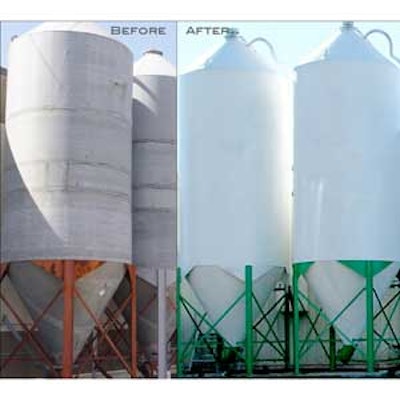
title
 Cortec’s VpCI®-386 is an organic water-based acrylic coating that provides superior multi-metal corrosion protection in harsh, outdoor, unsheltered applications. According to the company, the coating is further characterized by:
Cortec’s VpCI®-386 is an organic water-based acrylic coating that provides superior multi-metal corrosion protection in harsh, outdoor, unsheltered applications. According to the company, the coating is further characterized by:
- Since it can be used as a direct-to-metal coating or as a finish coat, it greatly reduces costs associated with corrosion, making it far more economical solution than conventional topcoats.
- The complex mixture of non-toxic, organic inhibitors offers protection that is more effective than most paints and zinc-rich primers.
- The product is low-VOC and non-flammable, so it is completely safe for applicators and the environment.
- VpCI®-386 is superior to coatings formulated with inorganic pigments because the resistance has been improved by replacing pigments and metal oxides with more effective micro-corrosion inhibitors.
- The special combination of additives provides a composite polymer barrier that significantly retards the reaction of metal ionization — a protective film is adsorbed onto metal surfaces and VpCI® micro-corrosion inhibitor molecules form a very thin micro-layer that reaches every area of the metal, protecting even hard-to-reach surfaces against micro-corrosion.
- VpCI®-386 forms a fast-drying thixotropic coating that is resistant to sagging or running off and protects against corrosive electrolytes in most aggressive environments.
- The clear coating allows for visual inspection of the metal surface after application, yet it can be easily pigmented with pigment dispersions.
- The coating is washable, has good chemical resistance and is UV-resistant, giving optimal outdoor performance without cracking or chipping upon prolonged exposure to sunlight.
- It is effective over wide array of substrates; galvanized, carbon and stainless steels, cast iron, aluminum, copper, concrete, wood, plaster and masonry.
- The product requires minimal surface preparation, compared to conventional primers that require sand blasting.
[email protected]
www.cortecvci.com


















